Submitted:
11 July 2023
Posted:
13 July 2023
You are already at the latest version
Abstract
Keywords:
Background
The European Union of Aquarium Curators
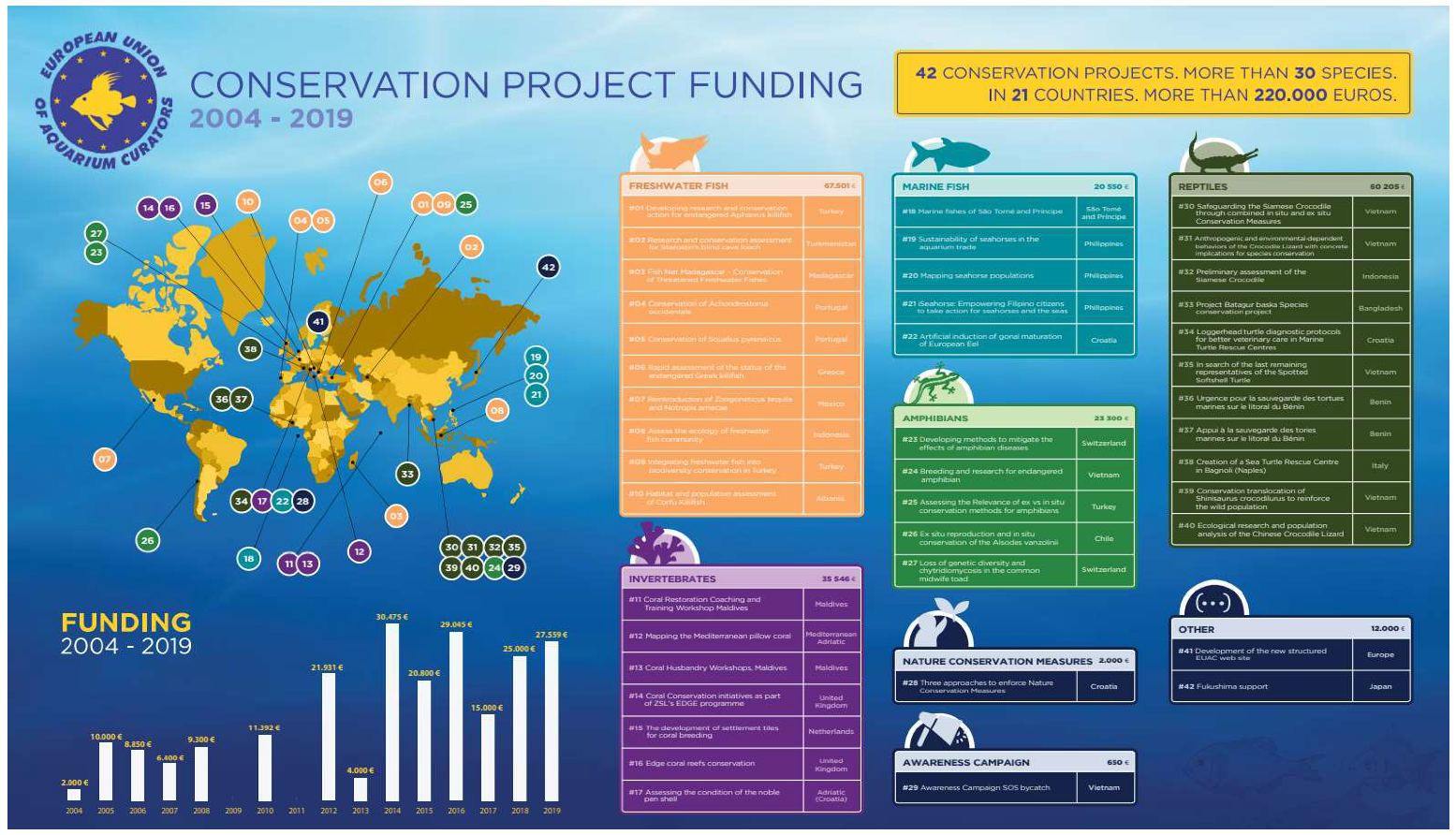
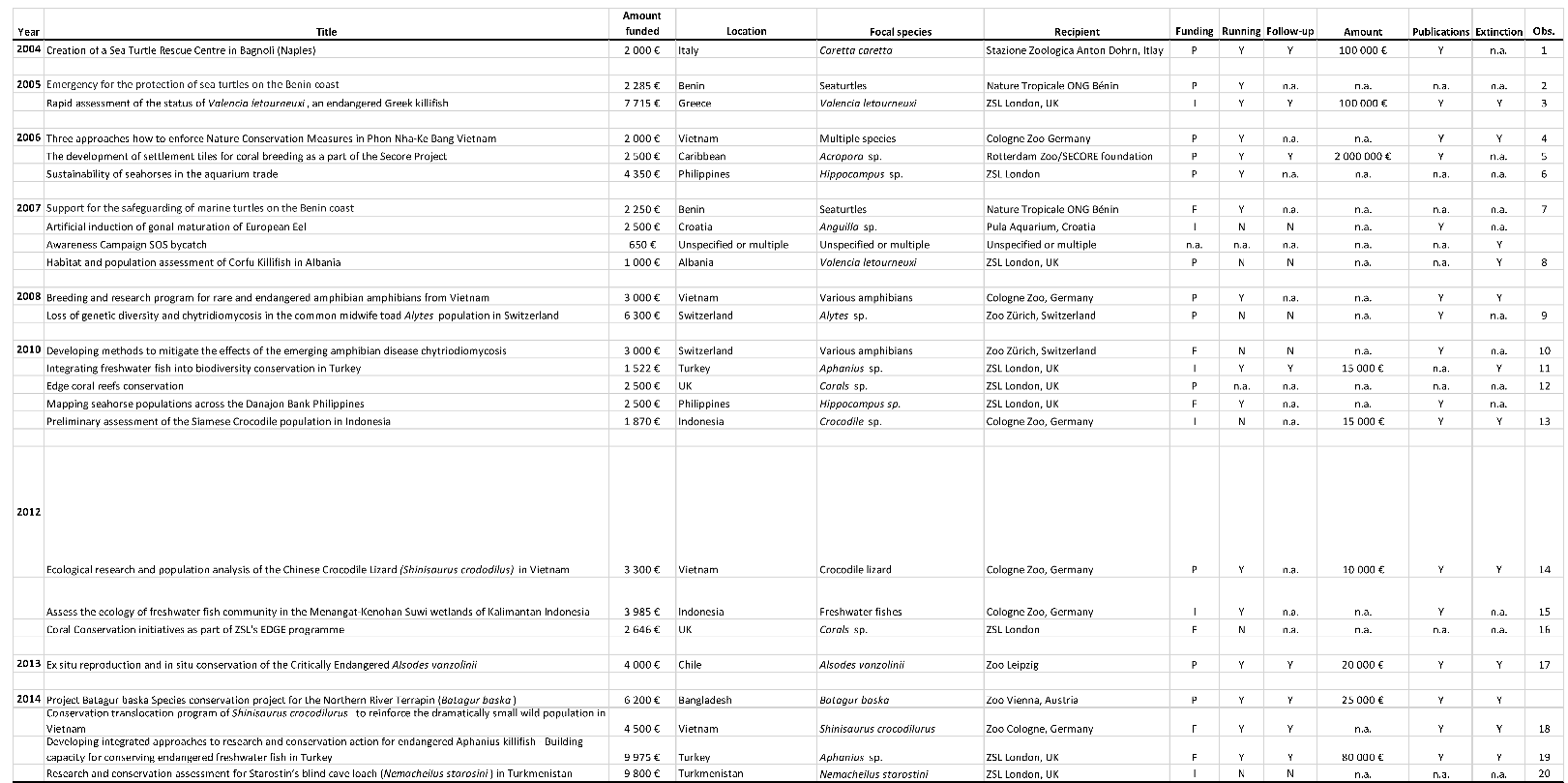
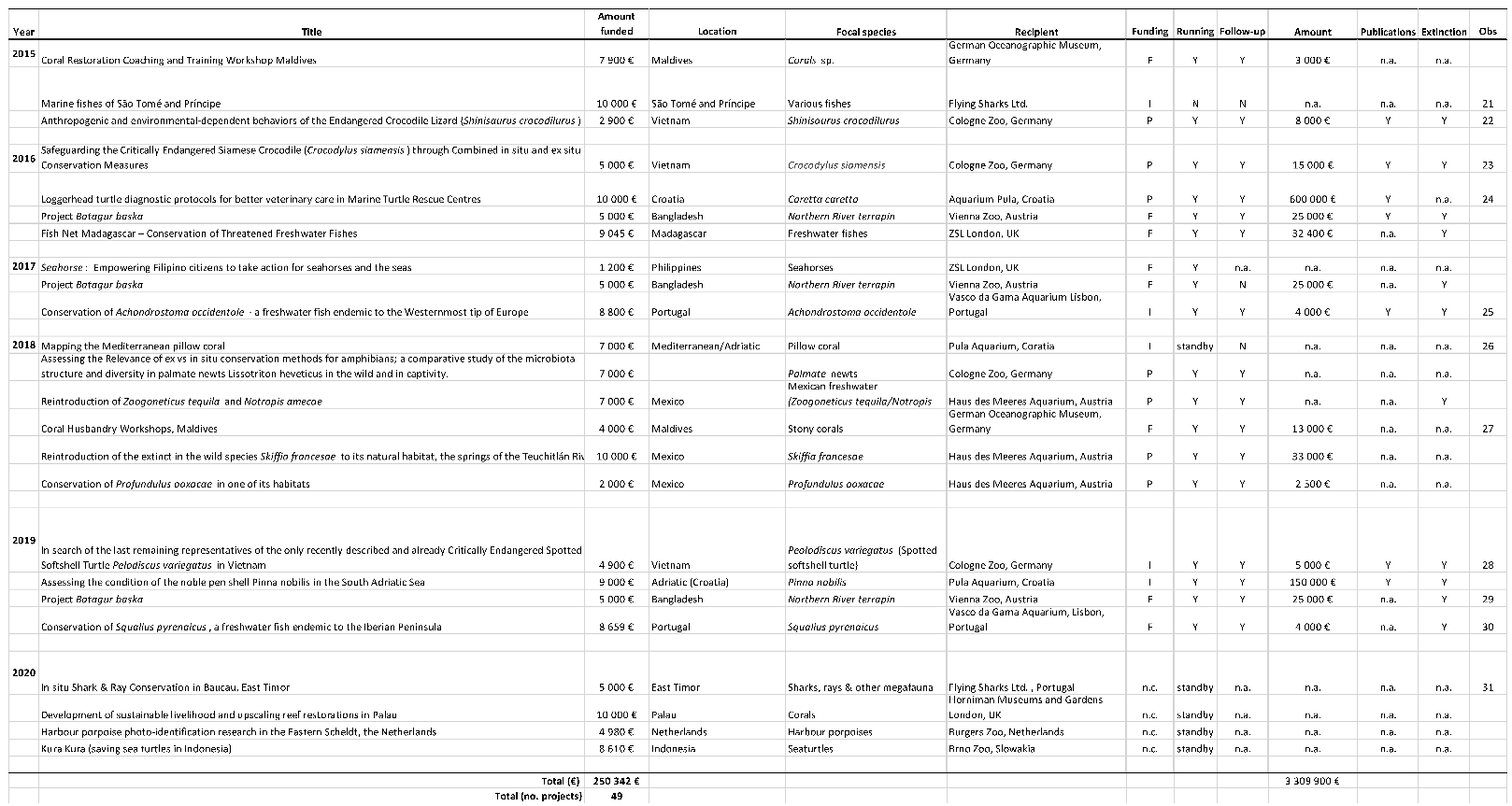
Action - Projects
- Assess in situ benefits from the recently conducted restocking actions (monitoring the current density of individuals and compare it with previously gathered baseline data).
- To support the logistics of a third restocking action.
- To implement in situ conservation measures, which were conducted with local students, to consolidate the need to have locals as allies in the conservation of the fluvial ecosystem. Without this funding, restocking actions would continue to be mere releases of fish without a formal involvement of the society.
- Funding allocated to genetic analyses for the prosecution of the captive breeding programme targeting this species, since the quantification of an eventual loss of genetic diversity is essential to maintain or to change the ongoing procedures in the future. This objective was partially met, and DNA analyses are still underway with regards to assess whether current genetic diversity may be considered satisfactory, or not.
- Anthropogenic and environmental-dependent behaviors of the Endangered Crocodile Lizard (Figure 10) in Vietnam with concrete implications for species conservation (2015)
- Conservation translocation program of Shinisaurus crocodilurus to reinforce the dramatically small wild population in Vietnam (2014)
- Ecological research and population analysis of the Chinese Crocodile Lizard in Vietnam (2012)
- Assess the ecology of freshwater fish community in the Menangat-Kenohan Suwi wetlands of Kalimantan Indonesia (2012)
- Preliminary assessment of the Siamese Crocodile population in Indonesia (2010)
- Breeding and research programme for rare and endangered amphibian amphibians from Vietnam (2008)
- To improve the welfare of the collection of over twenty Malagasy freshwater endemic species being managed at the Andapa aquaculture facility.
- To increase the breeding success of each species being maintained in Andapa after a full review of their environmental triggers for spawning and their ecological requirements.
- To ensure that robust, genetically healthy populations of each threatened Malagasy species is maintained long term for future restocking programmes.
- To acquire and secure stable captive populations of those species of threatened Malagasy freshwater fish species that are not currently kept in the Andapa aquaculture facility including sufficient numbers of Paretroplus gymnopreoperculatus.
- To raise the profile of Madagascar’s unique endemic freshwater fish fauna on a national and international level with particular emphasis on teaching the local community of their value.
- To provide husbandry training to the Andapa aquaculture facility to help improve breeding success and encourage stable and sufficiently sizeable populations for future generations.
- To provide training in fish handling and transport to the employees of the Andapa aquaculture facility in order to improve survival during translocation exercises.
- To provide training in water quality management to the employees of the Andapa aquaculture facility to encourage greater monitoring of key parameters and avoid losses.
- To hold a workshop with relevant people in Madagascar focused on developing a conservation management plan for species of freshwater fish under threat.
Consequences - Discussion
Conclusions
Acknowledgements
| 1 | |
| 2 | |
| 3 | |
| 4 | |
| 5 | |
| 6 |
References
- Anon. Verknüpfung ökologischer Nischenmodellierung mit naturschutzrelevanter in situ Forschung: Verbreitung und Bestandssituation des IUCN-gelisteten und endemischen Vietnamesischen Krokodilmolch Tylototriton vietnamensis im Norden Vietnams. Terraria 5, Nr. 12 (2012): 118–19.
- Anon. Conserving Vietnam’s biodiversity - The Cologne Zoo’s nature conservation programme in Vietnam. Association of Zoos and Aquariums) Nr. 9 Zoos help sustaining the rich biodiversity of Vietnam” 9 (o. J.): 5–9.
- Afonso P., Porteiro F.M., Santos R.S., Barreiros J.P., Worms J., Wirtz P. Coastal marine fishes of São Tomé Island (Gulf of Guinea). Arquipélago. Life and Marine Sciences 17 A (1999): 65–92.
- Anderson C., Waheed A. The economics of shark and ray watching in the Maldives. Newsletter of IUCN Shark Specialist Group, Shark News, 13, Nr. Shark News (2001): 3.
- Behler N., Kopsieker L., Staniewicz A., Darmasyah S., Stuebing R., Ziegler T. Population size, demography and diet of the Siamese crocodile, Crocodylus siamensis (Schneider, 1801) in the Mesangat swamp in Kalimantan, Indonesia. Raffles Bulletin of Zoology, Nr. 66 (2018): 506–16.
- Bernardes M., Pham T.C., Nguyen Q. T., Ziegler T. Newt beginnings: How EAZA has facilitated public awareness training and in situ research of an IUCN listed newt species endemic to Vietnam. Zooquaria 73 (2011): 23.
- Bernardes M., Rödder D., Nguyen T.T., Pham C.T., Nguyen T.Q., Ziegler T. Habitat chracterization and potential distribution of Tylototriton vietnamensis in northern Vietnam. J. Nat. Hist. 47 (2013): 17–18. [CrossRef]
- Bernardes M., Rödder D., Pham C.T., Nguyen T.Q., Ziegler T. Integration of species distribution modeling with in situ research for the conservation of the endemic Vietnamese crocodile newt (Tylototriton vietnamensis). Froglog 20, Nr. 5 (2012): 21–23.
- Bianco P. G. Précision sur la distribution de Cobitis taenia Linnaeus, 1758 (Cobitidae) et de Valencia hispanica (Valenciennes, 1846) (Cyprinodontidae) dans les eaux douces d’Italie. Cybium 11 (2) (1987): 207–12.
- Carlson, R.R. et al. Land Use Impacts on Coral Reef Health: A Ridge-to-Reef Perspective” Front. Mar. Sci. (18 September 2019). [CrossRef]
- Clark, M.R. et al. The impacts of deep-sea fisheries on benthic communities: a review”. ICES Journal of Marine Science (73), Issue suppl_1, January (2016): i51–i69. [CrossRef]
- Clua E., Buray N., Legendre P., Mourier J., Plane S. Business partner or simple catch? The economic value of the sicklefin lemon shark in French Polynesia. Marine and Freshwater Research 62 (2011): 764–70. [CrossRef]
- Conte A. What is the Value of a Sea Turtle?: A Case Study of the Conservation Ethics of Sea Turtle Fishermen in the Caribbean Coast of Nicaragua. Independent Study Project (ISP) Collection, 2011, 1186.
- Correia J.P.S. Marine Animals and Human Care Toward Effective Conservation of the Marine Environment. In Leal Filho W., Azul A.M., Brandli L., Lange Salvia A., Wall T. (eds) Life Below Water. Encyclopedia of the UN Sustainable Development Goals. Springer, Cham., 2020. [CrossRef]
- Crivelli A.J. In IUCN Red List of Threatened Species. Version 2012. Bd. 1. IUCN, 2006.
- Darwall, W. et al. Freshwater biodiversity: a hidden resource under threat." Wildlife in a changing world. An Analysis of the 2008 IUCN Red List of Threatened Species 43 (2009).
- Dick G. Gusset M. The global reach of zoos and aquariums in visitor numbers and conservation expenditures. International Zoo Yearbook, 2010. [CrossRef]
- Dudgeon, D. Multiple threats imperil freshwater biodiversity in the Anthropocene.” Current Biology 29 (19), (2019), Pages R960-R967. [CrossRef]
- Floeter S.R., Rocha L.A., Robertson D.R., Joyeux J.C, Smith-Vaniz W.F., Wirtz P., Edwards A.J., u. a. Atlantic reef fish biogeography and evolution. Journal of Biogeography 35 (1) (2008): 22–47. [CrossRef]
- Freyhof J., Kärst H., Geiger M.F. Valencia robertae, a new killifish from southern Greece (Cyprinodontiformes: Valenciidae). Ichthyological Exploration of Freshwaters v. 24 (4) (2013): 289–98.
- Gawor A., Chapuis S., Pham C.T., Nguyen T.Q., Schmitz A., Ziegler T. Larval morphology oft wo species of the genus Theloderma (Tschudi, 1838) from Vietnam (Anura: Rhacophoridae: Rhacophorinae). Zootaxa 3395 (2012): 59–64. [CrossRef]
- Gawor A., Hendrix R., Vences M., Böhme W., Ziegler T. Larval morphology in four species of Hylarana from Vietnam and Thailand with comments on the taxonomy of H. nigrovittata sensu latu (Anura: Ranidae). Zootaxa 2051 (2009): 1–25. [CrossRef]
- Gawor A., Pham C.T., Nguyen T.Q., Nguyen T.T., Schmitz A., Ziegler T. The herpetofauna of the Bai Tu Long National Park, northeast Vietnam. Salamandra 52, Nr. 1 (2016): 23–41.
- Gawor A., Rauhaus A., Karbe D., Van Der Straeten K., Lötters, Ziegler T. Is there a chance for conservation breeding? Ex situ management, reproduction, and early life stages of the Harlequin toad Atelopus flavescens Duméril & Bibron, 1841 (Amphibia: Anura: Bufonidae). Amphibian and Reptile Conservation 5, Nr. 3 (2012b): 29–44.
- Gawor A., van der Straeten K., Karbe D., Manthey U., Ziegler T. Reproduction and development of the dark-sided frog Hylarana nigrovittata sensu lato at the Cologne Zoo. Salamandra 47, Nr. 1 (2011): 1–8.
- Geiger C.C., Bregnard C., Maluenda E., Voordouw M. J., Schmidt B. R. Antifungal treatment of wild amphibian populations caused a transient reduction in the prevalence of the fungal pathogen, Batrachochytrium dendrobatidis. Scientific Reports 7 (2017). [CrossRef]
- Geiger C.C., Schmidt B. R. Laboratory tests of antifungal agents to treat tadpoles against the pathogen Batrachochytrium dendrobatidis. Dis Aquat Org 103 (2013): 191–97. [CrossRef]
- Geiger C.C., Schmidt B. R., Origgi F.C. Accumulation of the pathogenic fungus Batrachochytrium dendrobatidis on the regressing tail of midwife toads Alytes obstetricans undergoing metamorphosis. Amphibia-Reptilia 34 (2013): 255–58. [CrossRef]
- Geissler P., Hartmann T., Ihlow F., Rödder D., Poyarkov N. A., Nguyen T.Q., Ziegler T., Böhme W. The Lower Mekong: an insurmountable barrier to amphibians in southern Indochina? Biological Journal of the Linnean Society 114, Nr. 4 (2015): 905–14. [CrossRef]
- Geissler P., Poyarkov N. A., Grismer L., Nguyen T.Q., An H.T., Neang T., Kupfer A., Ziegler T., Böhme W., Müller H. New Ichthyophis species from Indochina (Gymnophiona, Ichthyophiidae): 1. The unstriped forms with descriptions of three new species and the redescription of I. acuminatus Taylor, 1960, I. youngorum Taylor, 1960 and I. laosensis Taylor, 1969. Organisms, Diversity and Evolution 15, Nr. 1 (2014): 143–75. [CrossRef]
- Giakoumi S., Zimmerman B., Zogaris S., Economou A.N., Kalogianni E. Current population status of Valencia letourneuxi (Sauvage 1880) in the Mornos River Delta. Poster., 2006.
- Gonzáles-Mantilla P.G., Gallagher A.J., León C.J., Vianna G.M.S. Economic impact and conservation potential of shark-diving tourism in the Azores Islands. Marine Policy 135 (2022): 12. [CrossRef]
- Gusset M., Dick G. The global reach of zoos and aquariums in visitor numbers and conservation expenditures. Zoo Biol. 30 (2011): 566–69. [CrossRef]
- Hecht V.L., Pham C.T., Nguyen T.T., Nguyen T.Q., Bonkowski M., Ziegler T. First Report on the herpetofauna of Tay Yen Tu Nature Reserve, northeastern Vietnam. Biodiversity Journal 4, Nr. 4 (2013): 507–52.
- Hendrix R., Böhme W., Ziegler T. The tadpole of the helmeted toad, Ingerophrynus galeatus (Günther, 1864), from Vietnam (Anura: Bufonidae). Herpetology Notes 2 (2009): 155–60.
- Hendrix R., Gawor A., Vences M., Ziegler T. The tadpole of the narrow-mouthed frog Microhyla fissipes from Vietnam (Anura: Microhylidae). Zootaxa 1675 (2008): 67–68. [CrossRef]
- Hendrix R., Grosjean S., Le Khac Q., Vences M., Vu Ngoc T., Ziegler T. Molecular identification and description of the tadpole of the Annam Flying Frog, Rhacophorus annamensis Smith, 1924 (Anura: Rhacophoridae). Salamandra 43 (1) (2007): 11–19.
- Hendrix R., Nguyen Quang T., Böhme W., Ziegler T. New anuran records from Phong Nha – Ke Bang National Park, Truong Son, central Vietnam. Herpetology Notes 1 (2008): 23–31.
- Kalogianni E., Giakoumi S., Zogaris Y., Chatzinikolaou Y., Zimmerman B., Economou A.N. Current distribution and ecology of the critically endangered Valencia letourneuxi in Greece. Biologia 65 (2010): 128–39. [CrossRef]
- Le D. T., Pham A.V., Nguyen S, H. L., Nguyen Q. T., Ziegler T. First records of Megophrys daweimontis Rao and Yang, 1997 and Amolops vitreus (Bain, Stuart and Orlov, 2006) (Anura: Megophryidae, Ranidae) from Vietnam. Asian Herpetol. Res. 6, Nr. 1 (2015): 66–72. [CrossRef]
- Le D. T., Pham A.V., Nguyen S.H.L., Ziegler T., Nguyen T.Q. Babina lini (Chou, 1999) and Hylarana menglaensis Fei, Ye et Xie, 2008, two additional anuran species for the herpetofauna of Vietnam. Russian Journal of Herpetology 21, Nr. 4 (2014): 315–21. [CrossRef]
- Leewis R.J., Janse M. Advances in Coral Husbandry in Public Aquariums. Public Aquarium Husbandry Series, Public Aquarium Husbandry Series, 2 (2008): 460.
- ———. Advances in coral husbandry in public aquariums. In International Symposium of Coral Husbandry in Public Aquaria. Arnhem: Burgers’ Zoo, 2008.
- Lötters S., Ellwein D., Karbe D., van der Straeten K., Luger M., Rautenberg J., Rödder D., Venegas P. J., Werner P., Ziegler T. Erforschung und Schutz der letzten Harlekinfrösche. Elaphe 19, Nr. 2 (2011): 6–11.
- Luu V.Q., Calame T., Nguyen T.Q., Ohler A., Bonkowski M., Ziegler T. First records of Gracixalus supercornutus (Orlov, Ho and Nguyen, 2004) and Rhacophorus maximus Günther, 1858 from Laos. Herpetology Notes 7 (2014): 419–23.
- Luu V.Q., Le C. X., Do H. Q., Hoang T.T., Nguyen T.Q., Bonkowski M., Ziegler T. New records of amphibians from Thuong Tien Nature Reserve, Hoa Binh Province, Vietnam. Herpetology Notes 7 (2013): 51–58.
- Luu V.Q., Nguyen T, Q., Pham C.T., Dang K. N., Vu T. N., Miskovic S., Bonkowski M., Ziegler T. No end in sight? Further new records of amphibians and reptiles from Phong Nha – Ke Bang National Park, Quang Binh Province, Vietnam. Biodiversity Journal 4, Nr. 2 (o. J.): 285–300.
- Mauvisseau Q., Kalogianni E., Zimmerman B., Bulling M., Brys R., Sweet M. eDNA-based monitoring: Advancement in management and conservation of critically endangered killifish species. Environmental DNA, 2020, 1–13. [CrossRef]
- Mieras P.A., Harvey-Clark C., Bear M., Hodgin G., Hodgin B. Chapter Five - The Economy of Shark Conservation in the Northeast Pacific: The Role of Ecotourism and Citizen Science. Advances in Marine Biology 78 (2017): 121–53. [CrossRef]
- Nguyen T.Q., Hendrix R., Böhme W., Vu Ngoc T., Ziegler T. A new species of the genus Philautus (Amphibia: Anura: Rhacophoridae) from the Truong Son Range, Quang Binh Province, central Vietnam. Zootaxa 1925 (2008): 1–13. [CrossRef]
- Nguyen Quang T., Dang That T., Pham The C, Nguyen Thien T, Ziegler T. Amphibian breeding station in Hanoi: a trial model for linking conservation and research with sustainable use. Froglog 91 (2009): 12–15.
- Nguyen T.Q., Le M.D., Pham C.T., Nguyen T.T., Bonkowski M., Ziegler T. A new species of Gracixalus (Amphibia: Anura: Rhacophoridae) from northern Vietnam. Organisms Diversity & Evolution, 2012. [CrossRef]
- Nguyen T.Q., Pham C.T., Nguyen T.T., Ngo H.N., Ziegler T. A new species of Theloderma (Amphibia: Anura: Rhacophoridae) from Vietnam. Zootaxa 4168, Nr. 1 (2016): 171–86. [CrossRef]
- Nguyen T.Q., Phung T.M., Le M.D., Ziegler T., Böhme W. First record of the genus Oreolalax (Anura: Megophryidae) from Vietnam with description of a new species. Copeia 2 (2013): 213–22. [CrossRef]
- Nguyen T.Q., Phung T.M., Schneider N., Botov A., Tran D.T.A., Ziegler T. New records of amphibians and reptiles from southern Vietnam. Bonn zool. Bulletin 63, Nr. 2 (2014): 148–56.
- Nguyen T.Q., Ziegler T. Amphibian research and conservation in Vietnam. Froglog 20, Nr. 5 (2012): 21–23. [CrossRef]
- Ohler A., Wollenberg K.C., Grosjean S., Hendrix R., Vences M., Ziegler T., Dubois A. Sorting out Lalos: description of new species and additional taxonomic data on megophryid frogs from northern Indochina (genus Leptolalax, Megophryidae, Anura). Zootaxa 3147 (2011): 1–83. [CrossRef]
- Ohler A., Wollenberg K.C., Grosjean S., Hendrix R., Vences M., Ziegler T., Dubois A. Sorting out Lalos: taxonomic revision of a group of megophryid frogs from northern Indochina (genus Leptolalax). Zootaxa, o. J.Packer J., Ballantyne R. The role of zoos and aquariums in education for a sustainable future. New directions for adult and continuing education 127 (2010): 25–34.
- ———. The role of zoos and aquariums in education for a sustainable future. New Directions for Adult and Continuing Education 127 (2010). [CrossRef]
- Pham A.V., Le D.T., Nguyen S.H.L., Ziegler T., Nguyen T.Q. First records of Leptolalax eos Ohler, Wollenberg, Grosjean, Hendrix, Vences, Ziegler et Dubois, 2011 and Hylarana cubitalis (Smith, 1917) (Anura: Megophryidae, Ranidae) from Vietnam. Russ. J. Herpetology 21, Nr. 3 (2014): 195–200.
- Pham A.V., Le D. T., Pham C.T., Nguyen S.L.H., Ziegler T., Nguyen T.Q. Two additional records of megophryid frogs, Leptobrachium masatakasatoi Matsui, 2013 and Leptolalax minimus (Taylor, 1962), for the herpetofauna of Vietnam. Revue Suisse de Zoologie 123, Nr. 1 (2016): 35–43.
- Pham C.T., Dogra A., Gawor A., Rauhaus A., Kloeble G., Nguyen T.Q., Ziegler T. First record of Amolops cremnobatus from Thanh Hoa Province, Vietnam, including an extended tadpole description and the first larval staging for Amolops. Salamandra 51, Nr. 2 (2015): 111–20.
- Pham C.T., Nguyen T.Q., Bernardes M., Nguyen T.T., Ziegler T. First records of Bufo gargarizans Cantor, 1842 and Odorrana lipuensis Mo, Chen, Wu, Zhang et Zhou, 2015 (Anura: Bufonidae, Ranidae) from Vietnam. Russ. J. Herpetology 23, Nr. 2 (2016): 103–7.
- Pham C.T., Nguyen T.Q., Hoang C. V., Ziegler T. New records and an updated list of amphibians from Xuan Lien Nature Reserve, Thanh Hoa Province, Vietnam. Herpetology Notes 9 (2016): 31–41.
- Pham C.T., Nguyen T.Q., Le M.D., Bonkowski M., Ziegler T. A new species of Odorrana (Amphibia: Anura: Ranidae) from Vietnam. Zootaxa 4084, Nr. 3 (2016): 421–35. [CrossRef]
- Phung T.M., Nguyen T.Q., Rauhaus A., Ziegler T. The first record of the Middle Back-stripe Bullfrog, Kaloula mediolineata (Anura: Microhylidae), from Phu Qui Island, Binh Thuan Province, southern Vietnam. Herpetology Notes 6 (2013): 463–65.
- Rauhaus A., Gawor A., Perl R.G.B., van der Straeten K., Karbe D., Pham C.T., Nguyen T.Q., Ziegler T. Larval development, stages and an international comparison of husbandry parameters of the Vietnamese Mossy Frog Theloderma corticale (Boulenger, 1903) (Anura: Rhacophoridae). Asian Journal of Conservation Biology 1, Nr. 2 (2012): 51–66.
- Reid, A. J., et al. Emerging threats and persistent conservation challenges for freshwater biodiversity.” Biological Reviews 94.3 (2019): 849-873. [CrossRef]
- Rodrigues N.V., Bertoncini Á., Fontes J. Peixes marinhos costeiros de São Tomé e Príncipe | coastal marine fishes of São Tomé and Príncipe. Flying Sharks & European Union of Aquarium Curators, 2018, 123.
- Rowley J. J. L., Tran D.T.A., Le D. T.T., Dau V.Q., Peloso P. L. V., Nguyen T.Q., Hoang H. D., Nguyen T.T., Ziegler T. Five new, microendemic Asian Leaf-litter frogs (Leptolalax) from the southern Annamite mountains, Vietnam. Zootaxa 4085, Nr. 1 (2016).
- Scheld S., Perl R.G.B., Rauhaus A., Karbe D., Van Der Straeten K., Hauswaldt J. S., Randrianiaina R.D., Gawor A., Vences M., Ziegler T. Larval morphology and development of the Malagasy frog Mantidactylus betsileanus. Salamandra 49, Nr. 4 (2013): 186–200.
- Schmidt B. R., Küpfer E., Geiger C.C., Wolf S., Schär S. Elevated temperature clears chytrid fungus infections from tadpoles of the midwife toad, Alytes obstetricans. Amphibia-Reptilia 32 (2011): 276–80.
- Smith M., Warmolts D., Thoney D., Hueter R., Murray M., Ezcurra J. The Elasmobranch Husbandry Manual II: Recent Advances in the Care of Sharks, Rays and their Relatives. Special Publication of the Ohio Biological Survey 8 (2017): 504.
- Smith M., Warmolts D., Thoney R., Hueter R. The Elasmobranch Husbandry Manual: Captive Care of Sharks, Rays and their Relatives. Special Publication of the Ohio Biological Survey 15 (2004): 589.
- Strauß S., Ziegler T., Allmeling C., Reimers K., Frank-Klein N., Seuntjens R., Vogt P. M. In vitro culture of skin cells from the Critically Endangered Chinese giant salamander, Andrias davidianus (Blanchard, 1871) (Amphibia, Caudata, Cryptobranchidae). Amphibian and Reptile Conservation 5, Nr. 4 (2013): 51–63.
- Tanner C. Sea Turtle Conservation in Ghana’s Western Region: The Bigger Picture. Marine Turtle Newsletter, 2013, 136 Auflage.
- Tarkhnishvili D., Schmitz R., Ziegler T. Trends in the variability of body proportions in Vietnamese anurans: Influence of climatic conditions versus climate-independent geographic clines. Amphibia-Reptilia, o. J.
- Ten Hagen L., Rodriguez A., Menke N., Göcking C., Bisping M., Frommolt K.-H., Ziegler T., Bonkowski M., Vences M. Vocalizations in juvenile anurans: common spadefoot toads (Pelobates fuscus) regularly emit calls before sexual maturity. Sci Nat 103, Nr. 75 (2016). [CrossRef]
- Thrush, S.F., Dayton, P.K. Disturbance to marine benthic habitats by trawling and dredging: Implications for marine biodiversity”. Annu Rev Ecol Syst 33 (2002): 449–473. [CrossRef]
- Topelko K.N., Dearden P. The Shark Watching Industry and its Potential Contribution to Shark Conservation. Journal of Ecotourism 4 (2) (2005): 108–28. [CrossRef]
- Tran A.T.D., Le Q.K., Le K.V., Vu T.N., Nguyen T.Q., Böhme W., Ziegler T. First and preliminary frog records (Amphibia: Anura) from Quang Ngai Province, Vietnam. Herpetology Notes 3 (2010): 111–19.
- Tran D.T.A., Nguyen T.T., Phung T.M., Böhme W., Ziegler T. Redescription of Rhacophorus chuyangsinensis Orlov, Nguyen & Ho, 2008 (Anura: Rhacophoridae) based on new collections from south Vietnam. Revue Suisse de Zoologie, o. J.
- Tran D.T.A., Nguyen T.T., Phung T.M., Ly T., Böhme W., Ziegler T. Redescription of Rhacophorus chuyangsinensis Orlov, Nguyen & Ho, 2008 (Anura: Rhacophoridae) based on new collections from new south Vietnamese provincial records: Lam Dong and Khanh Hoa. Revue Suisse de Zoologie 118, Nr. 3 (2011): 413–21.
- Van der Straeten K., Karbe D., Olbort S., Ziegler T. First record of the Asian horned frog, Megophrys nasuta, in the Aquarium of the Cologne Zoo. Terraria 62, Nr. 4 (2007): 45–51.
- Weissenbacher, A., Preininger, D., Ghosh, R., Morshed, A.G.J., Praschag, P. 2015. Conservation breeding of the Northern river terrapin Batagur baska at the Vienna Zoo, Austria, and in Bangladesh. International Zoo Yearbook 49: 31-41.
- Wildenhues M., Gawor A., Nguyen T.Q., Nguyen T.T., Schmitz A., Ziegler T. First description of larval and juvenile stages of Rhacophorus maximus Günther, 1859 ‚1858‘ (Anura: Rhacophoridae) from Vietnam. Revue Suisse de Zoologie 117, Nr. 4 (2010): 1–18.
- Wildenhues M. J., Bagaturov M., Schmitz A., Tran D. A. T., Hendrix R., Ziegler T. Captive management and reproductive biology of Orlov’s tree frog, Rhacophorus orlovi Ziegler & Köhler, 2001 (Amphibia: Anura: Rhacophoridae), including larval description, colour pattern variation and advertisement call. Der Zoologische Garten N.F. 80 (2011): 287–303.
- Wildenhues M., Rauhaus A., Bach R., Karbe D., van der Straeten K., Hertwig S.T., Ziegler T. Husbandry, captive breeding, larval development and stages of the Malayan horned frog Megophrys nasuta (Schlegel, 1858) (Amphibia: Anura: Megophryidae). Amphibian and Reptile Conservation 6, Nr. 1 (2012): 15–28.
- Wirtz P., Ferreira C.E.L., Floeter S.R., Fricke R., Gasparini J.L., Iwamoto T., Rocha L., Sampaio C.L.S., Schliewen U.K. Coastal Fishes of São Tomé and Príncipe islands, Gulf of Guinea (Eastern Atlantic Ocean)—an update. Zootaxa 1523 (2007): 1–48.
- Woodhams D. C., Geiger C.C., Reinert L. K., Rollins-Smith L.A., Lam B., Harris R. N., Briggs C. J., Vredenburg V. T., Voyles J. Treatment of amphibians infected with chytrid fungus: learning from failed trials with itraconazole, antimicrobial peptides, bacteria, and heat therapy. Dis Aquat Org 98 (2012): 11–25. [CrossRef]
- Ziegler T. Amphibian and reptilian diversity research, conservation and breeding projects in Vietnam. In Building a future for wildlife: zoos and aquariums committed to biodiversity conservation, 117–22. Gland: WAZA Executive Office, 2010.
- ———. Breeding and diversity research: “ex situ” and “in situ” Asian amphibian projects of the Cologne Zoo. In Programme and abstract book, Biology of the amphibians in the Sunda Region, South-East Asia, 25. Institute of Biodiversity and Environmental Conservation, Universiti Malaysia Sarawak, University Hamburg, 2009.
- ———. Breeding, research and conservation of tropical herpetodiversity: Linking ex situ with in situ approaches. In Biodiversity is Life, 73–77. Gland: WAZA Executive Office, 2011.
- ———. Field surveys and collection management as basis for herpetodiversity research and nature conservation in Vietnam. In Development of Hochiminh City Museum of Natural History, herausgegeben von Ho Chi Minh City People’s Committee, Viet Nam Union of Science and Technology Associations, Colivam, PTC, 230–48. Chi Minh City, 2007.
- ———. In situ and ex situ amphibian conservation projects of the Cologne Zoo: Research and breeding as our contribution towards species protection. Zeitschrift des Kölner Zoos 51(2) (2008): 67–88.
- ———. Protecting amphibian diversity. The Federal Government informs, Magazine of development policy 03/2008 062 (2008): 27–29.
- ———. Research as important challenge of Zoological Gardens to preserve biodiversity. In Verhandlungsbericht des IV. Rigi-Symposiums, 75–80. Goldau-Rigi, 2010.
- ———. Two decades of herpetodiversity research in Vietnam and Laos: A review of a German-Vietnamese long-term cooperation. In Proceedings of the 3rd National Scientific Conference on Amphibians and Reptiles in Vietnam, 5–18. Hanoi, Vietnam: Publishing House for Science and Technology, 2016.
- Ziegler T., Hartmann T., Van der Straeten K., Karbe D., Böhme W. Captive breeding and larval morphology of Tylototriton shanjing Nussbaum, Brodie & Yang, 1995, with an updated key of the genus Tylototriton (Amphibia: Salamandridae). Der Zoologische Garten N.F. 77 (2008): 246–60. [CrossRef]
- Ziegler T., Nguyen T.Q. Amphibian and Reptile breeding - The amphibian and reptilian breeding station at Hanoi. WAZA Magazine (World Association of Zoos and Aquariums) Nr. 9 Zoos help sustaining the rich biodiversity of Vietnam” 9 (2008): 10–14.
- Ziegler T., Nguyen T.Q. Gracixalus waza: May we introduce the WAZA Treefrog? A recently discovered amphibian species from northern Vietnam and named in honour of WAZA. WAZA news 1, Nr. 13 (2013): 2–3.
- Ziegler T., Pagel T. The contribution of the Cologne Zoo towards the Amphibian Ark: Breeding projects, research and education for the protection of amphibians. Draco 9(34) (2008): 87–96.
- Ziegler T., Rauhaus A., Mutschmann F., Dang, P. H., Pham C.T., Nguyen T.Q. Building up of keeping facilities and breeding projects for frogs, newts and lizards at the Me Linh Station for Biodiversity in northern Vietnam, including improvement of housing conditions for confiscated reptiles and primates. Der Zoologische Garten 85 (2016): 91–120. [CrossRef]
- Ziegler T., Rauhaus, A., Nguyen T.Q., Nguyen K. V. Südlichster Nachweis von Gekko badenii Szczerbak & Nekrasova, 1994, mit Bemerkungen zur Herpetofauna der Hon Me-Auffangstation in der Provinz Kien Giang, Südvietnam. Sauria 37, Nr. 2 (2015): 3–14.
- Ziegler T., Tran D.T.A., Nguyen T.Q., Perl R.G.B., Wirk L., Kulisch M., Lehmann T., u. a. New amphibian and reptile records from Ha Giang Province, northern Vietnam. Herpetology Notes 7 (2014): 185–201.
- Ziegler T., Van der Straeten K., Karbe D. The Asian Horned Frog Megophrys nasuta. Art für Art. NTV Terrarienbibliothek, 2008.
- Ziegler T., Vu Ngoc Thanh. Mười năm nghiên cứu đa dạng lưỡng cư bò sát tại Vườn Quốc gia Phong Nha - Kẻ Bàng. In [Ten years herpetodiversity research in Phong Nha - Ke Bang National Park, Bd. 167–178. Hue City: Hue University Publishing House, 2009.
- Ziegler T. Batrachological basis research within the nature conservation project of the Cologne Zoo in Vietnam. In Amphibians deserve our support. A contribution for the implementation of the WAZA resolution concerning measures against amphibian decline, herausgegeben von Dollinger P., 124, 2007.
- ———. Conserving Vietnam’s biodiversity - The Cologne Zoo’s nature conservation programme in Vietnam. Association of Zoos and Aquariums) Nr. 9 Zoos help sustaining the rich biodiversity of Vietnam” 9 (o. J.): 5–9.
- Ziegler T., Dang T.T., Nguyen T.Q. Breeding, natural history and diversity research: Ex situ and in situ Asian amphibian projects of the Cologne Zoo and the Institute of Ecology and Biological Resources. In Proceedings of the Conference Biology of the amphibians in the Sunda region, South-east Asia”, 137–46. Sarawak, Malaysia: Institute of Biodiversity and Environmental Conservation, Universiti Malaysia Sarawak, 2011.
- Ziegler T., Erfassung, D.R., Erhalt der Amphibienvielfalt. Projekte des Kölner Zoos. Praxis der Naturwissenschaften BIOLOGIE in der Schule / Artensterben bei Amphibien 62, Nr. 2 (2013): 10–16.
- Ziegler T., Nguyen T.Q. New discoveries of amphibians and reptiles from Vietnam. Bonn zoological Bulletin 57, Nr. 2 (2010): 137–47.
- Ziegler T., Rauhaus A. Erste herpetologische Amtshilfe aus Köln im Zoo Saigon. Terraria / Elaphe 54 (2015): 72–80.
- Ziegler T., Rauhaus A., Karbe D., Nguyen T.Q., Pham C.T., Huy P. D. New amphibian keeping and breeding facilities created at the Me Linh Station for Biodiversity, northern Vietnam. Amphibian Ark Newsletter Number 23 June 2013, 2013, Abschn. 14-15.
- Ziegler, T., Rauhaus A., Tran T. D., Pham C.T., Van Schingen M., Dang H. P., Le M.D., Nguyen T.Q. Die Amphibien- und Reptilienfauna der Me-Linh-Biodiversitätsstation in Nordvietnam. Sauria 37, Nr. 4 (2015): 11–44.
- Ziegler T., Thanh V.N. Ten years of herpetodiversity research in Phong Nha – Ke Bang National Park, central Vietnam. In Ke Bang National Park and Cologne Zoo, 10 years of cooperation (1999-2009), 103–24. Quang Binh:, 2009.
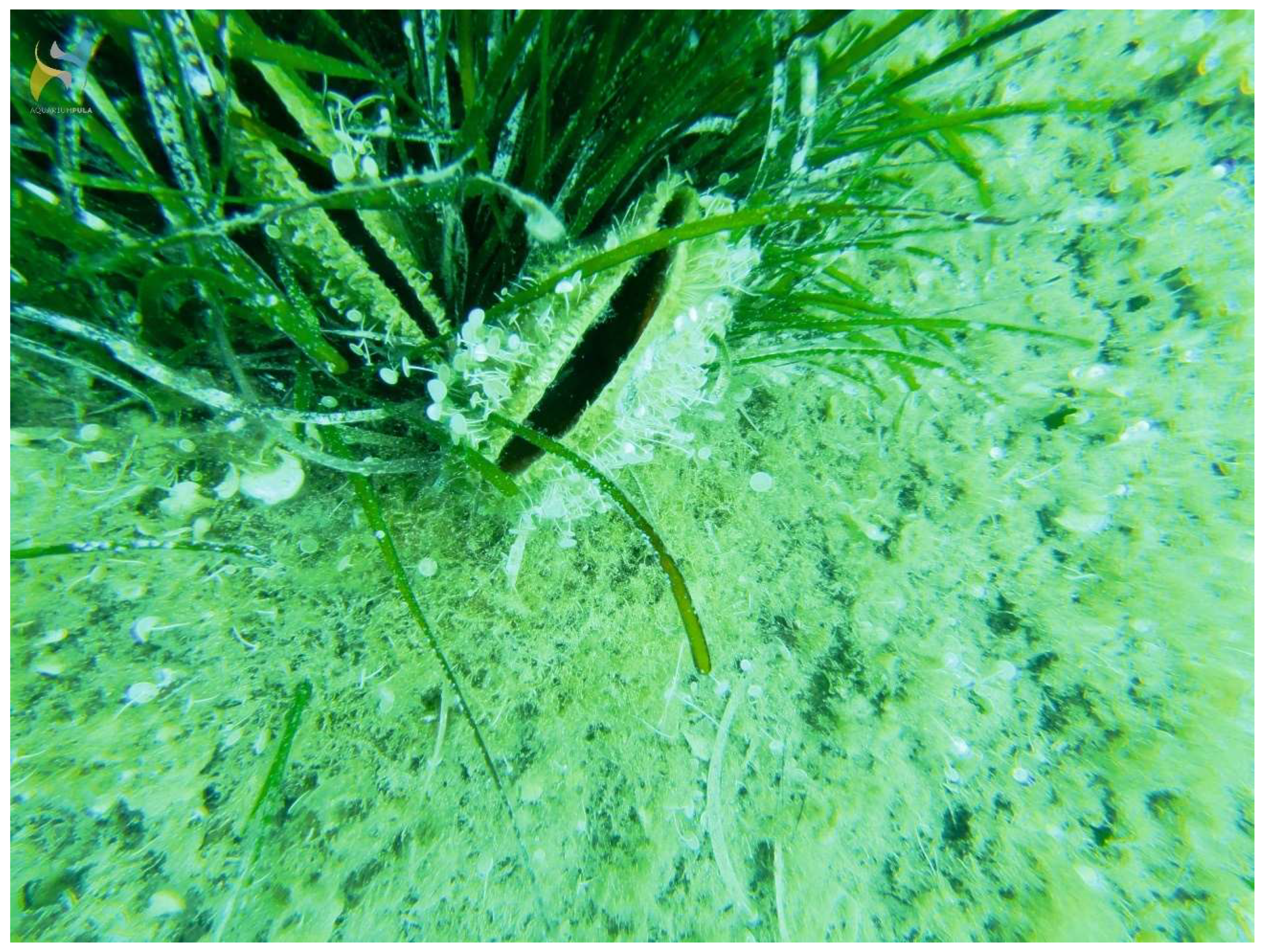
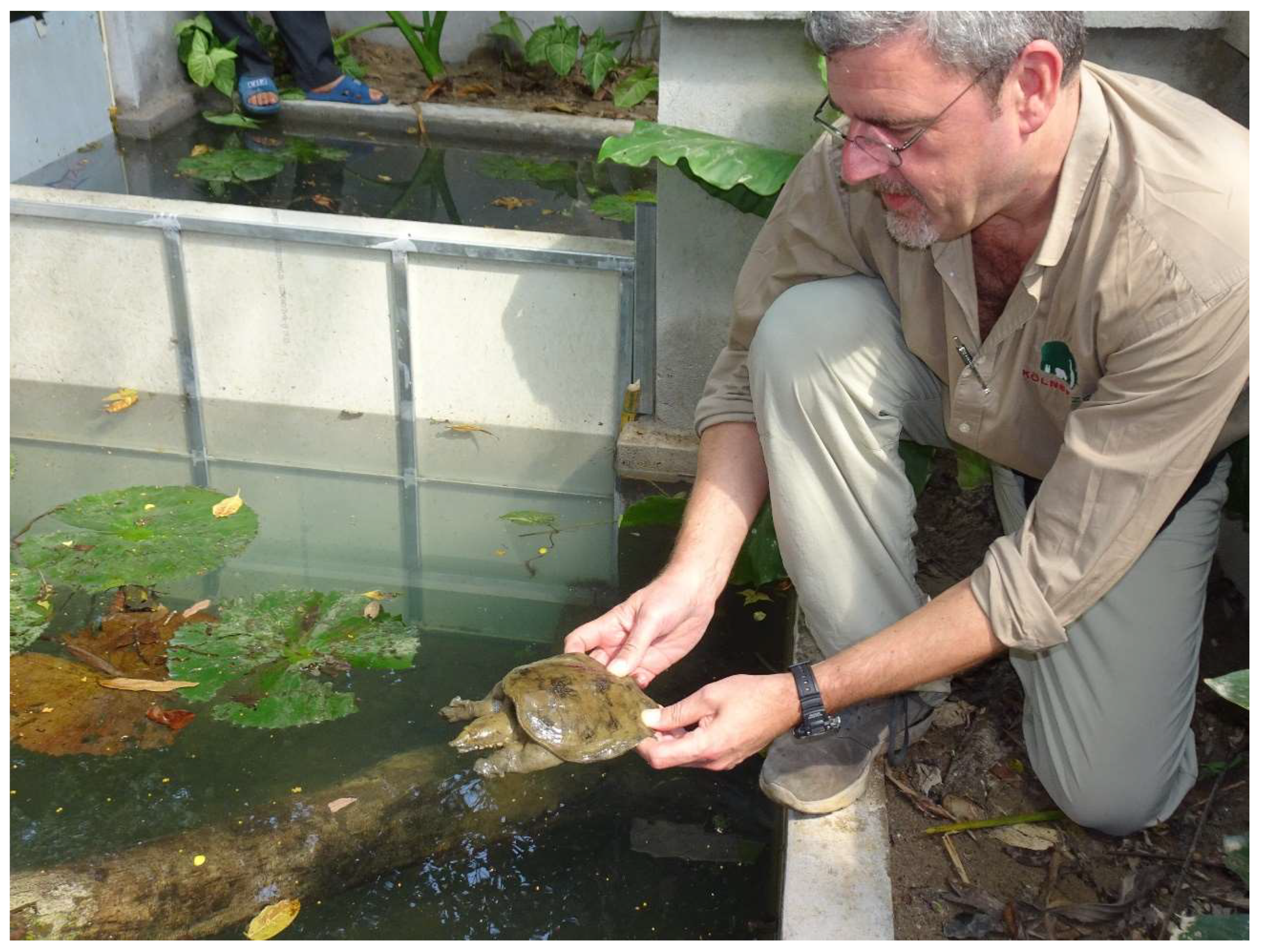
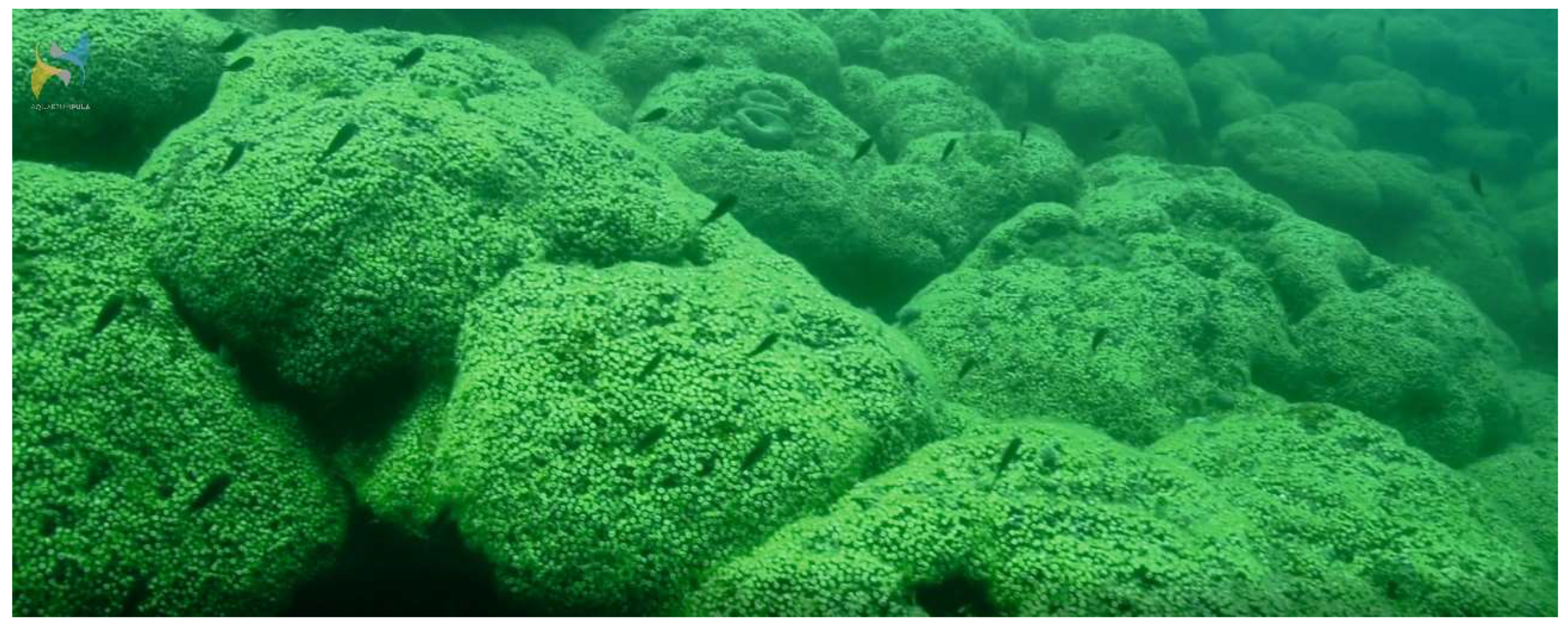
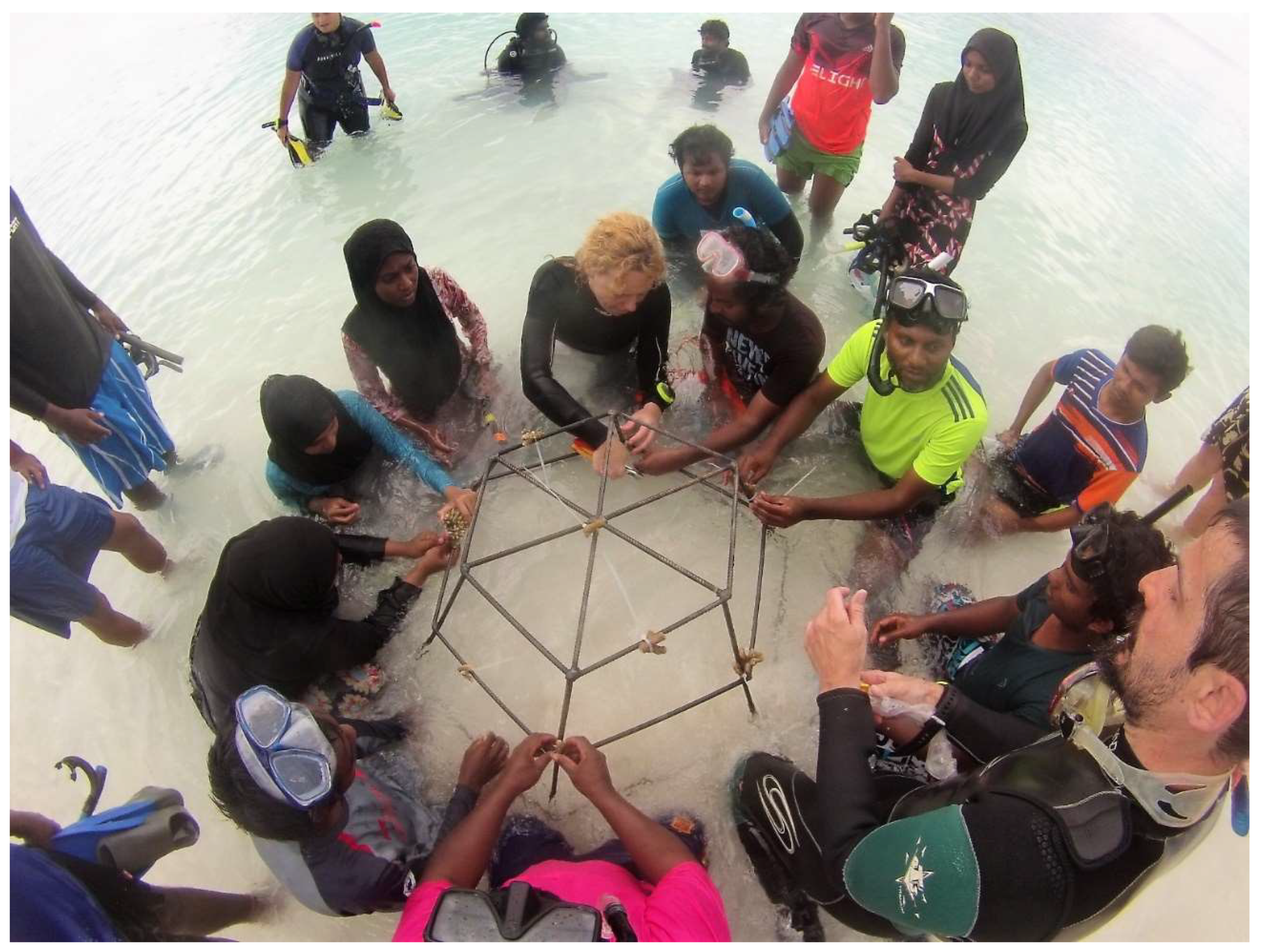
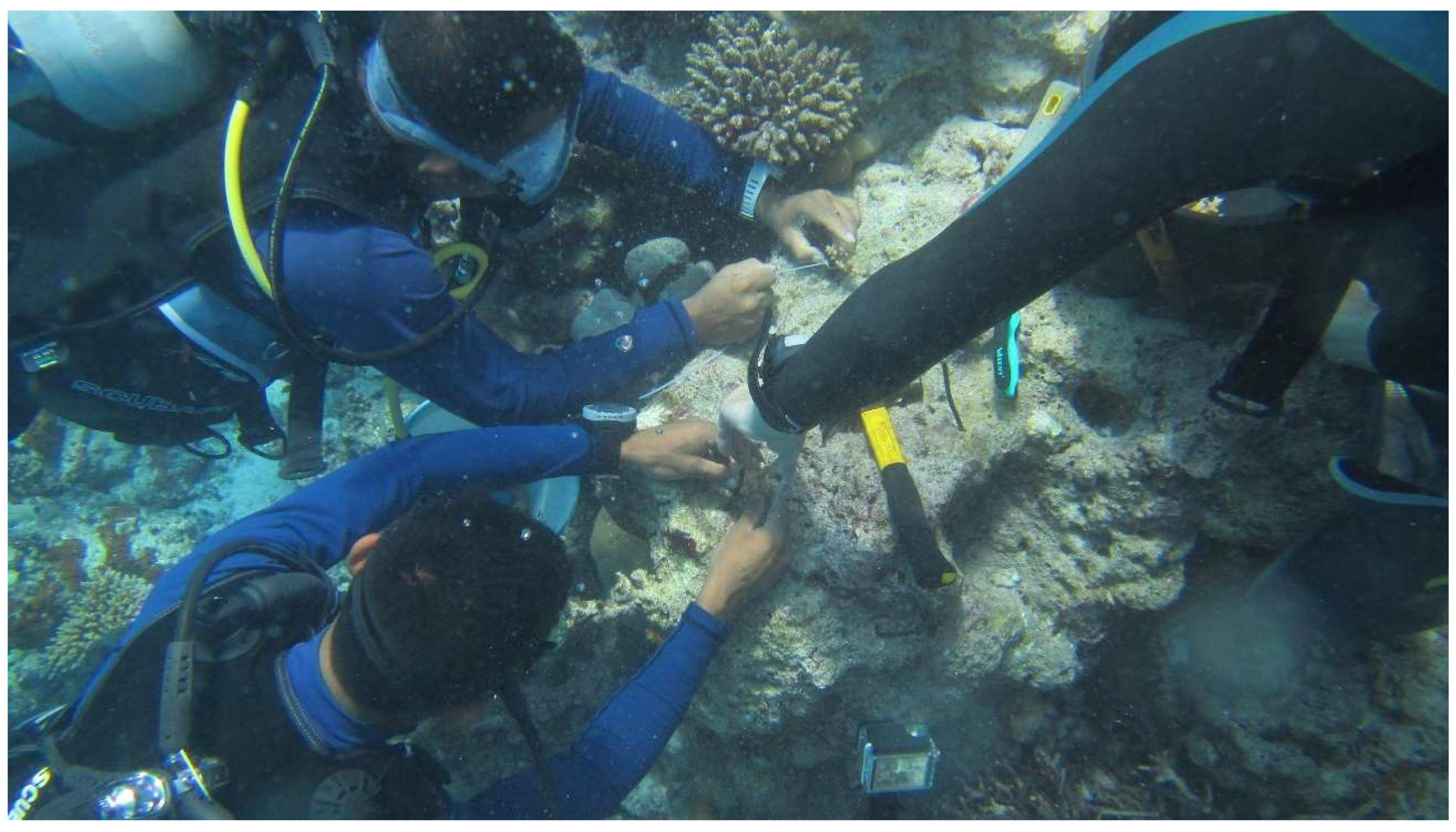
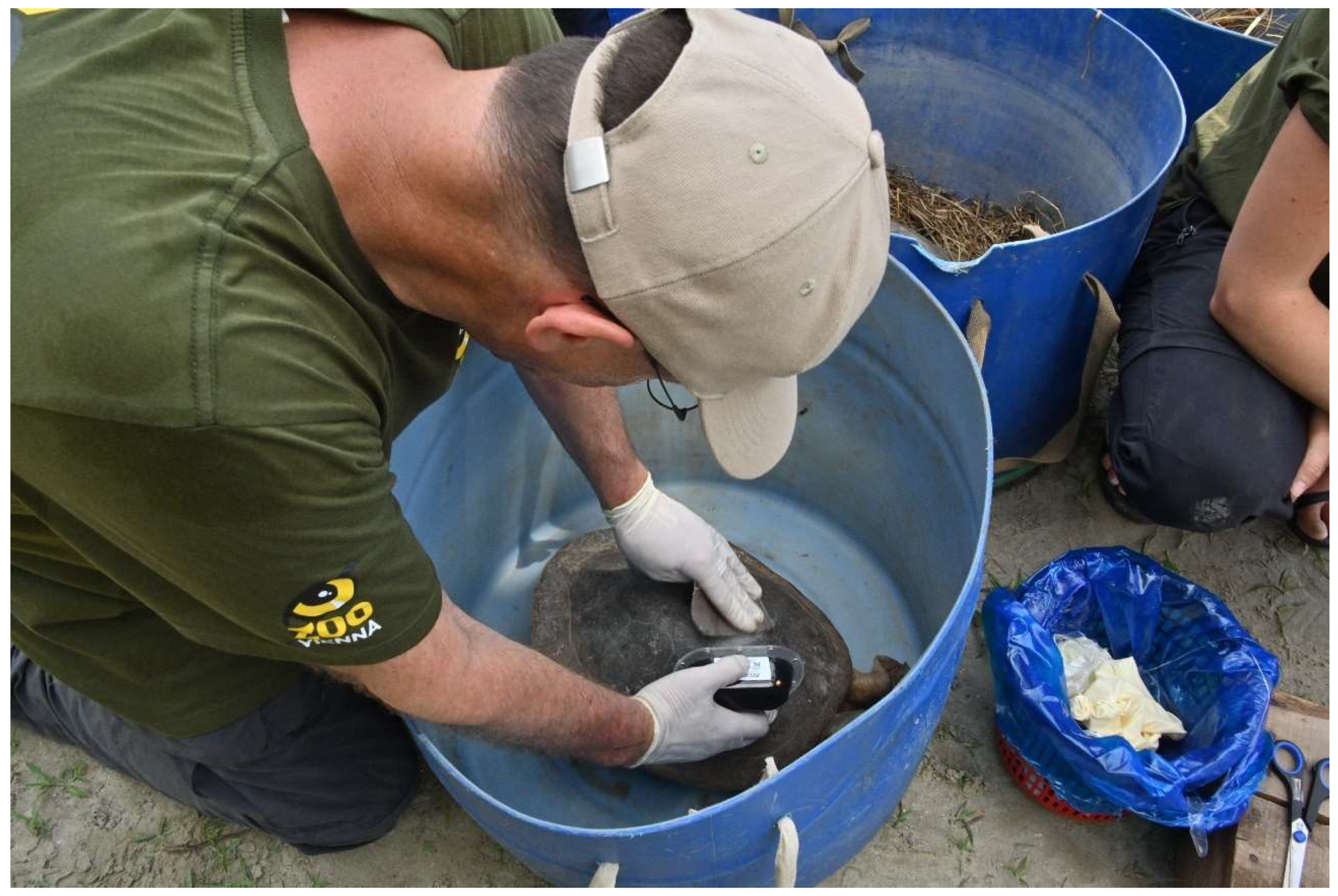
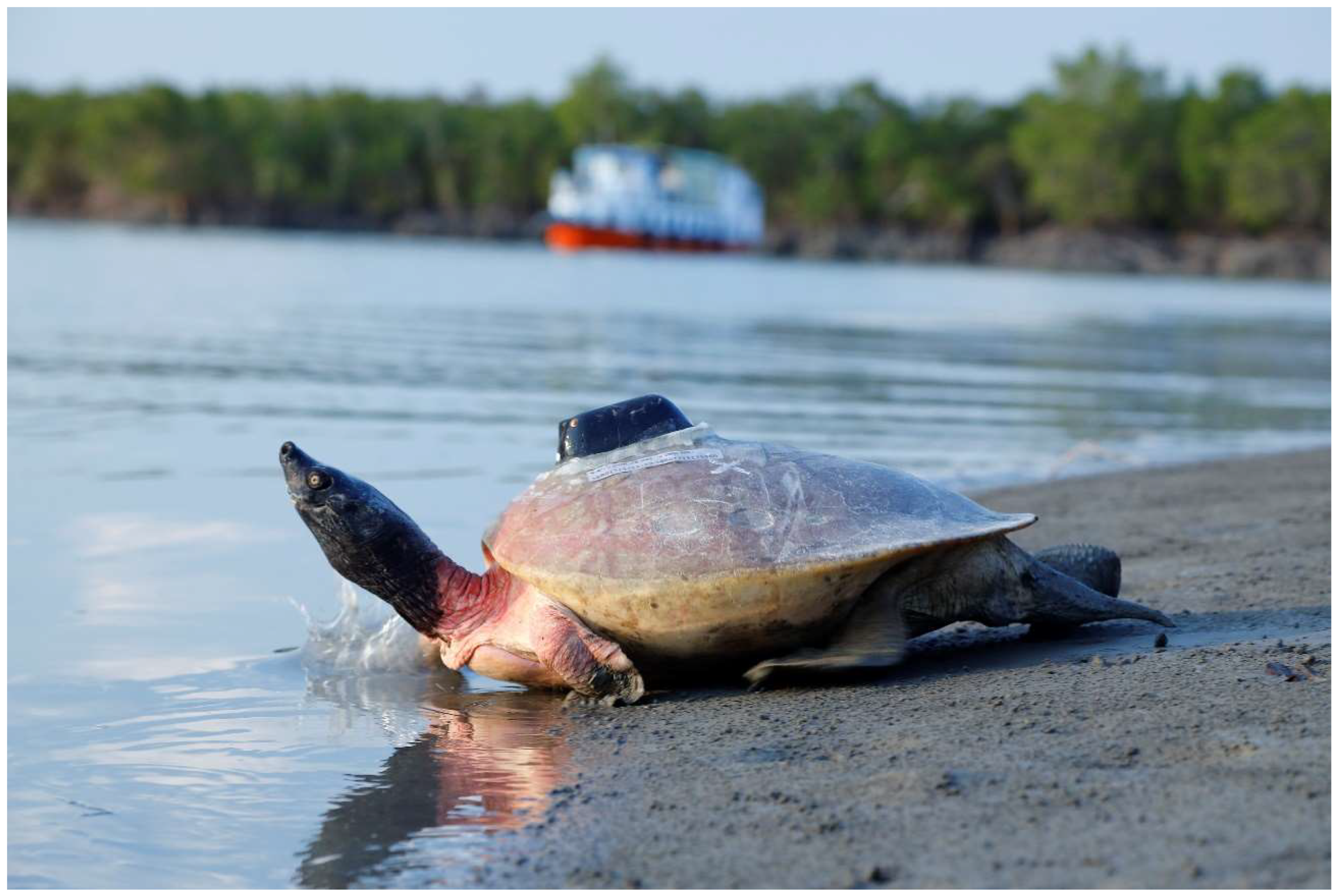
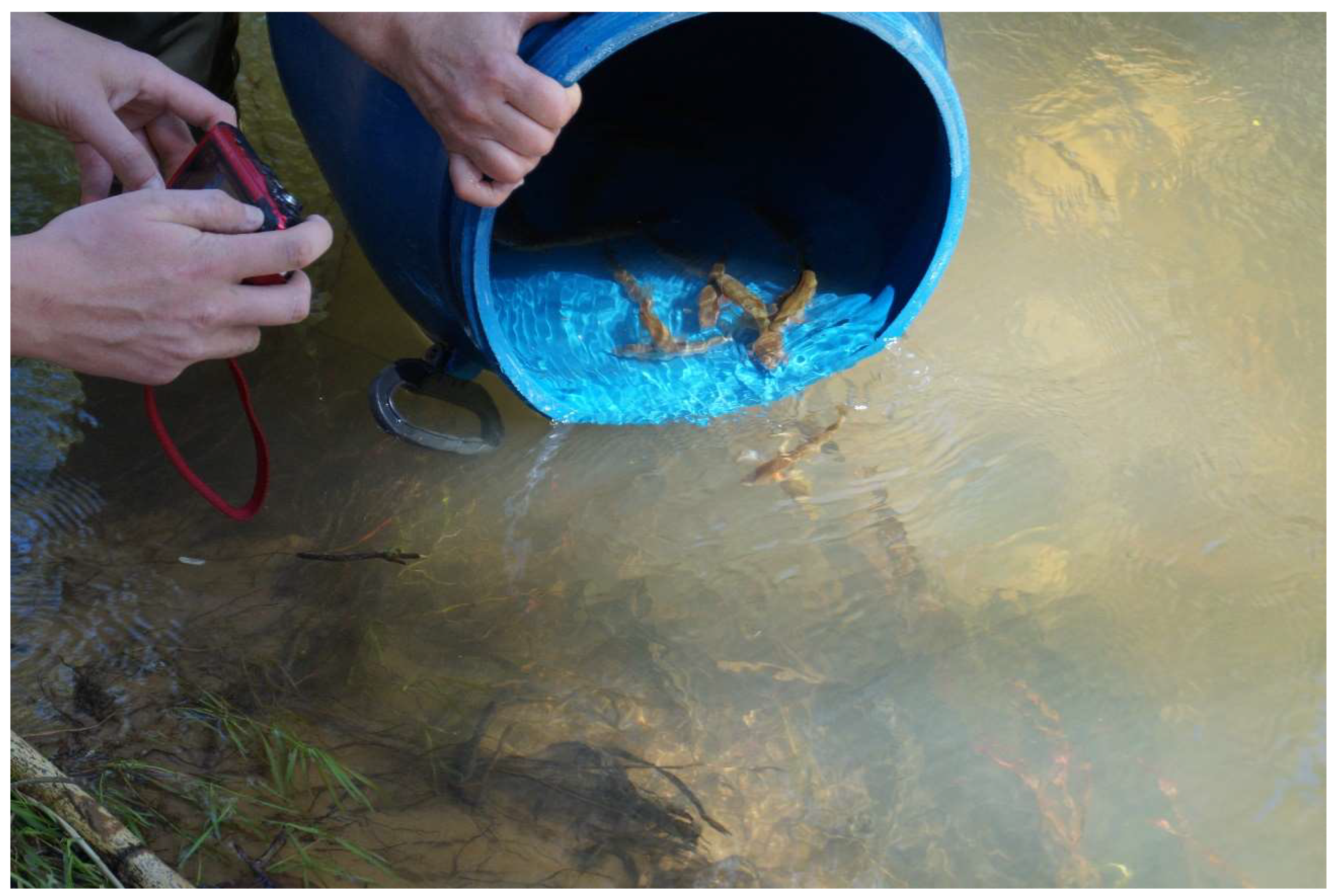
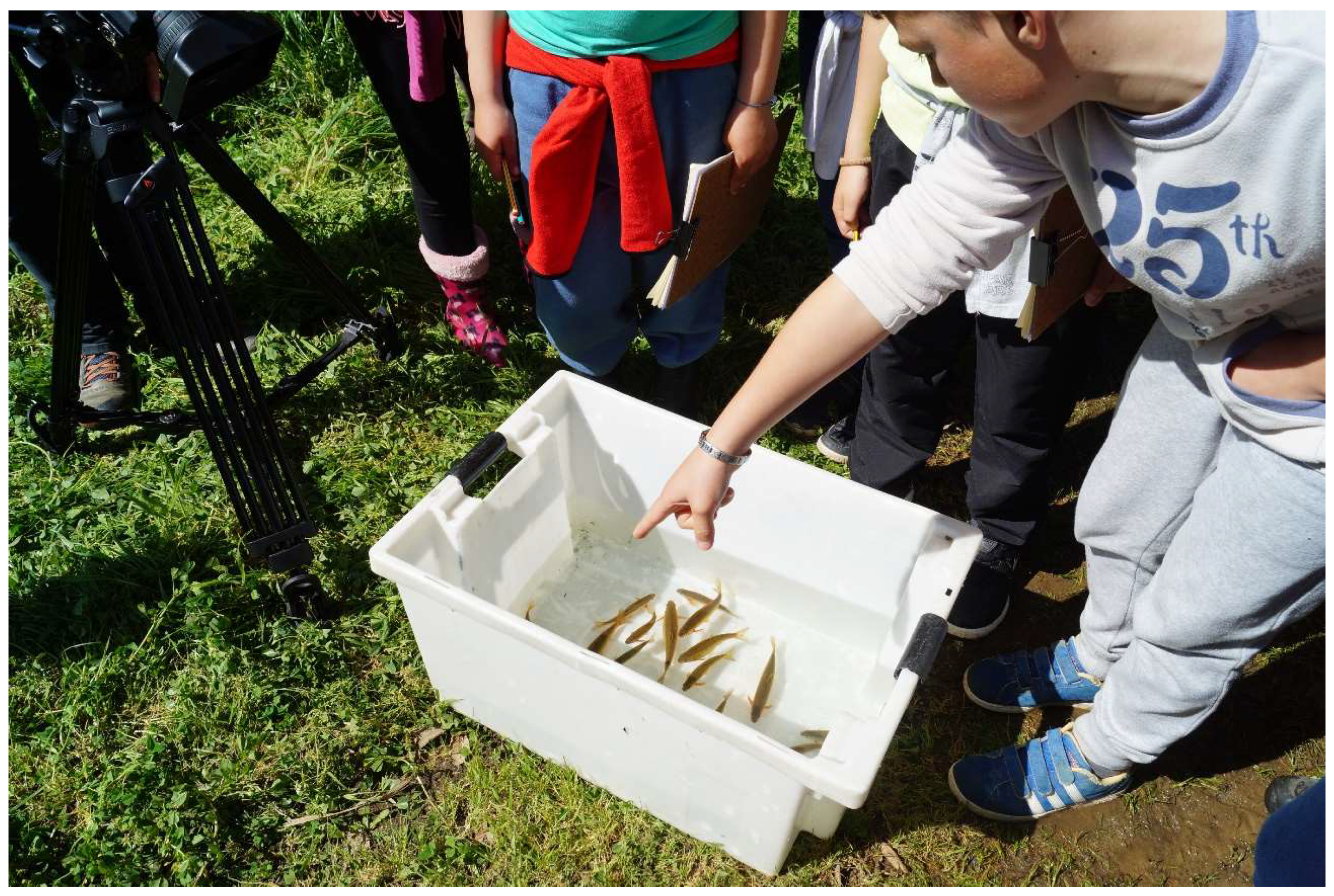
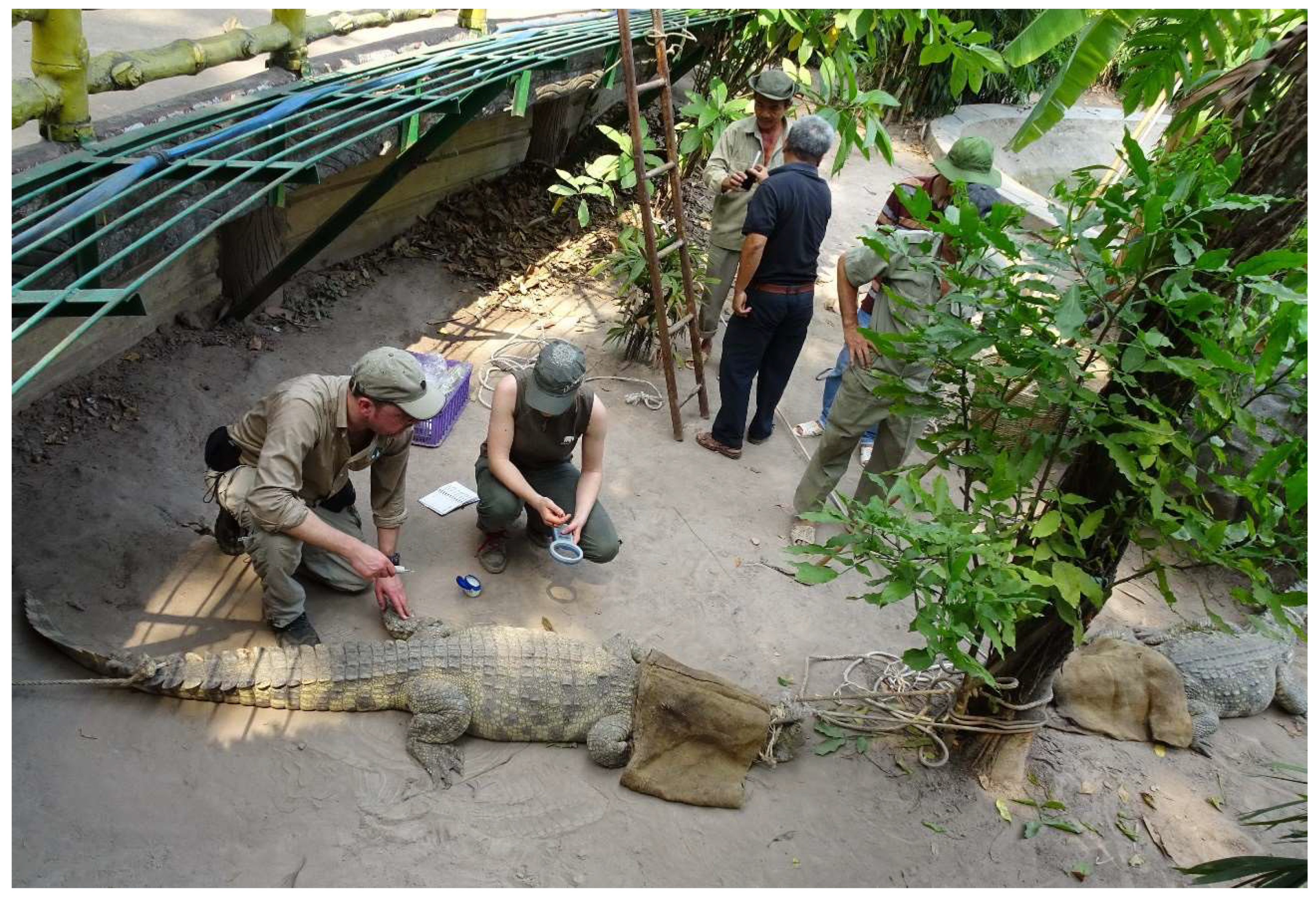
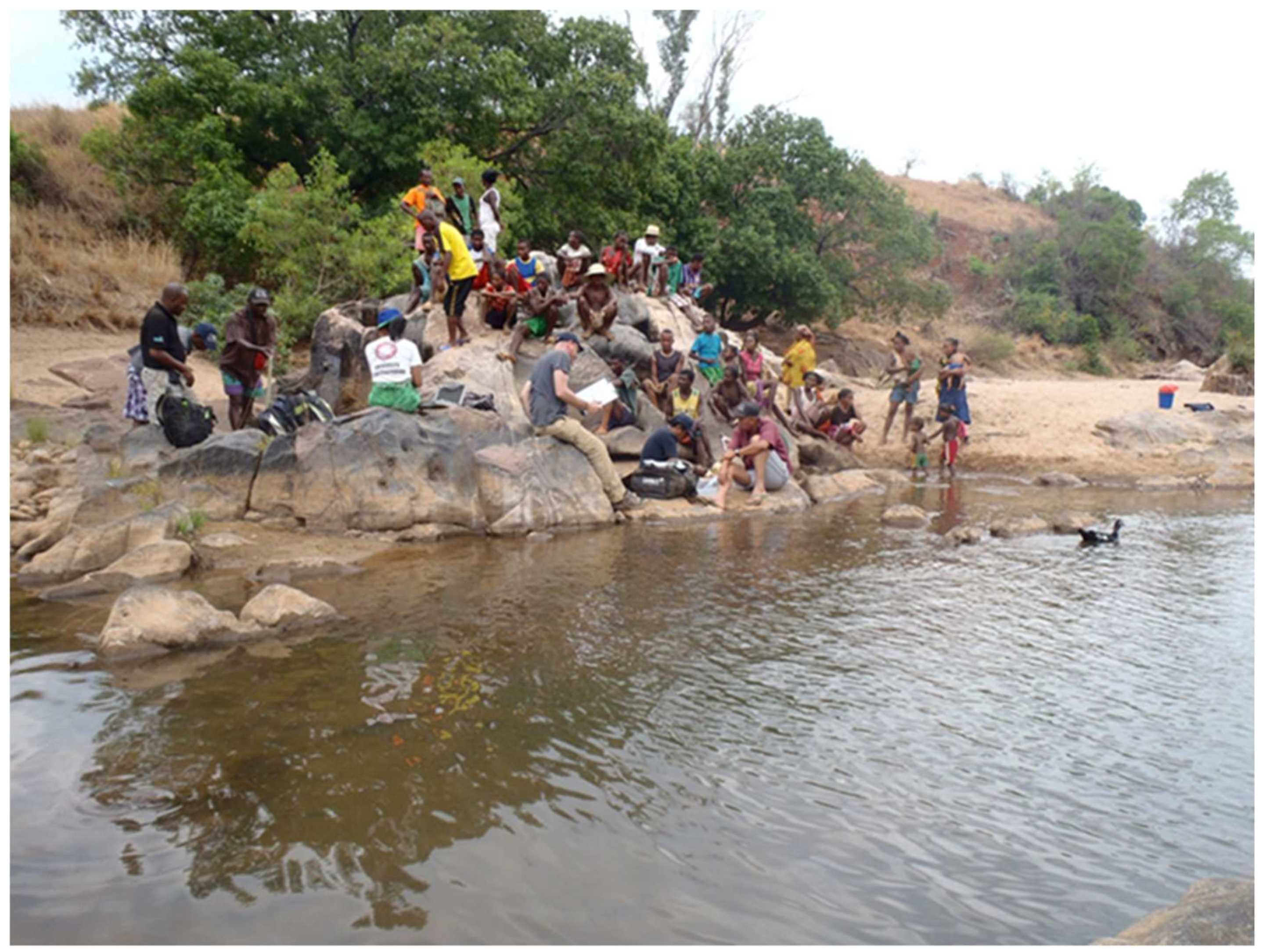
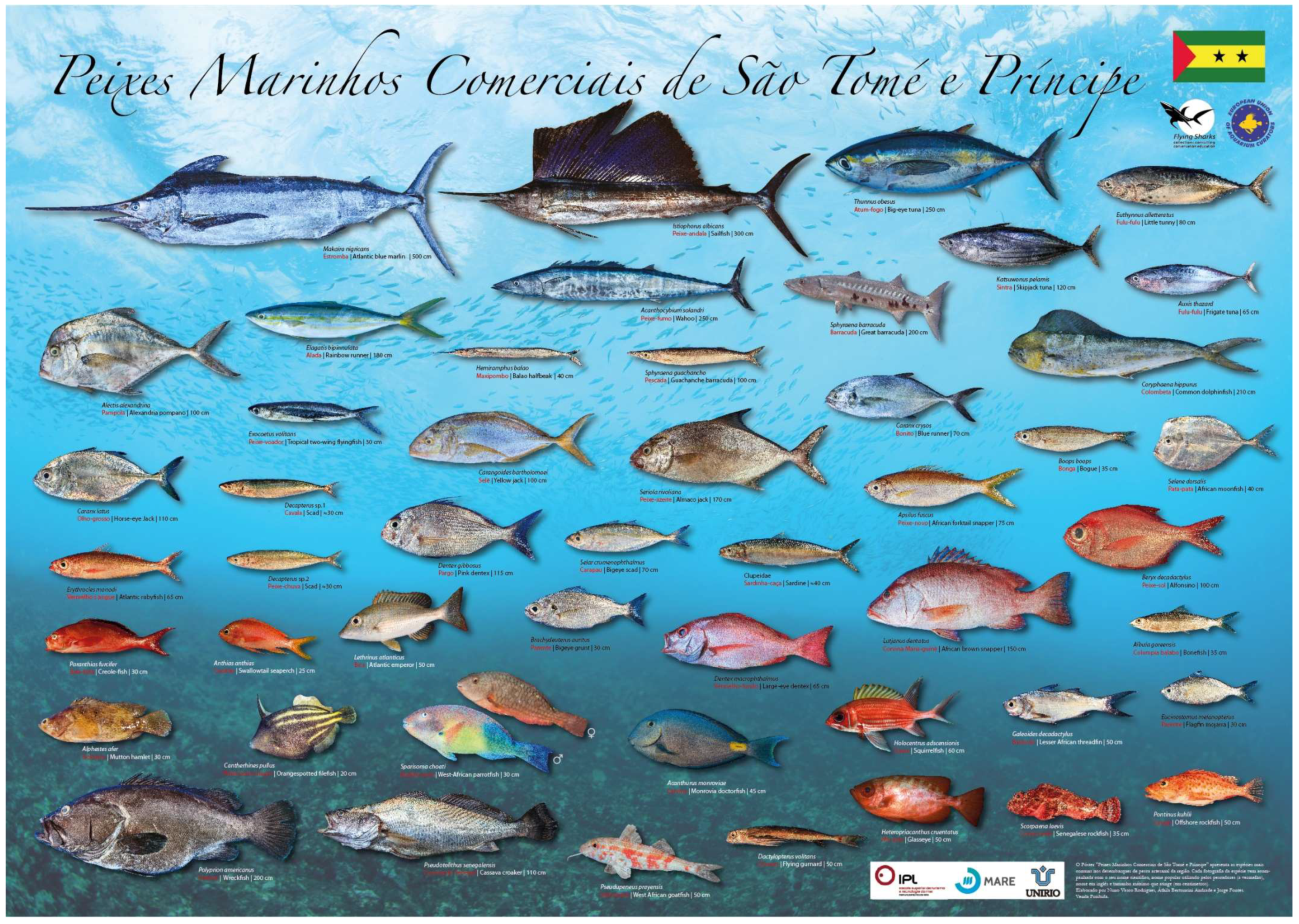

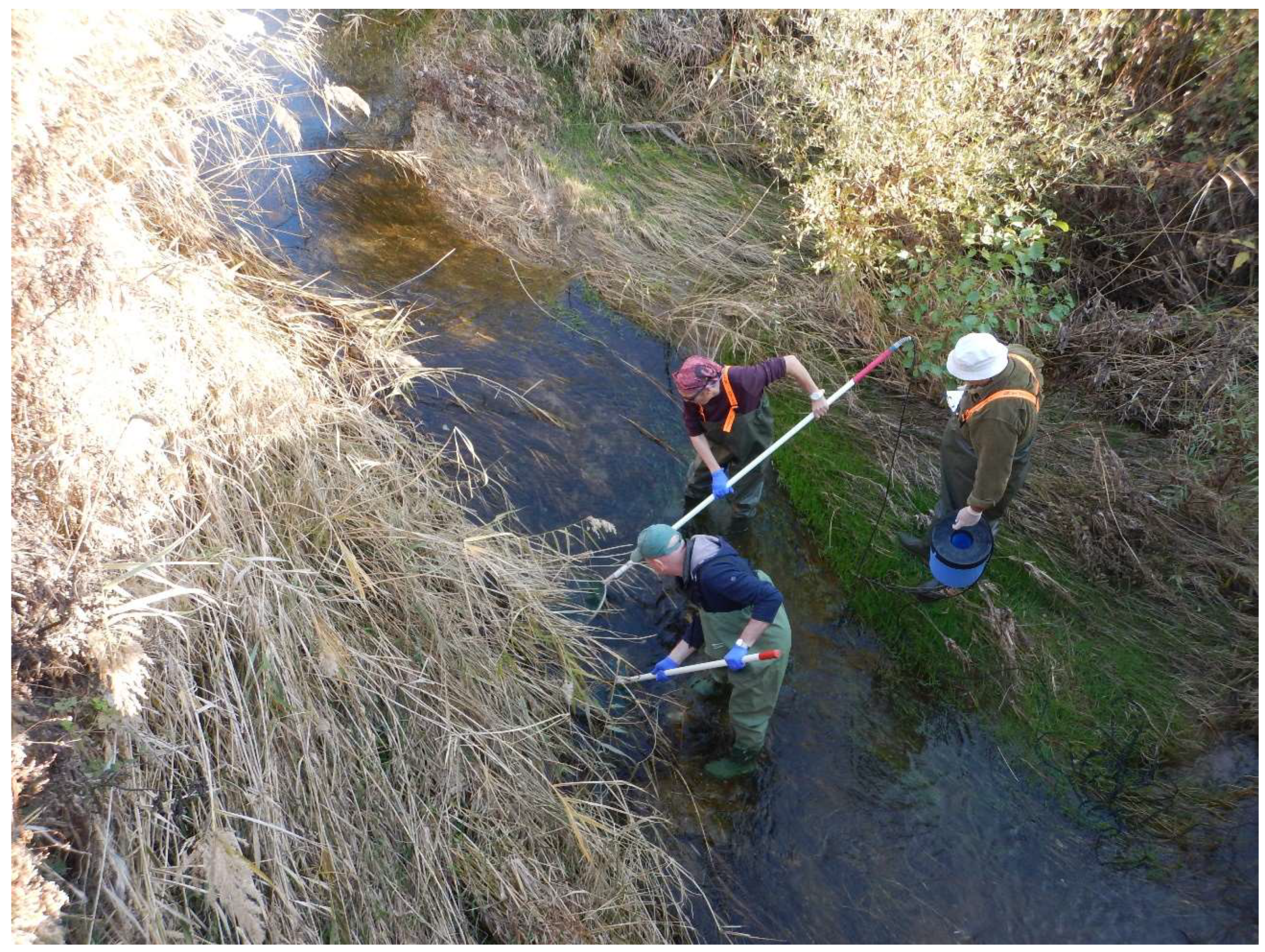

Disclaimer/Publisher’s Note: The statements, opinions and data contained in all publications are solely those of the individual author(s) and contributor(s) and not of MDPI and/or the editor(s). MDPI and/or the editor(s) disclaim responsibility for any injury to people or property resulting from any ideas, methods, instructions or products referred to in the content. |
© 2023 by the authors. Licensee MDPI, Basel, Switzerland. This article is an open access article distributed under the terms and conditions of the Creative Commons Attribution (CC BY) license (http://creativecommons.org/licenses/by/4.0/).





